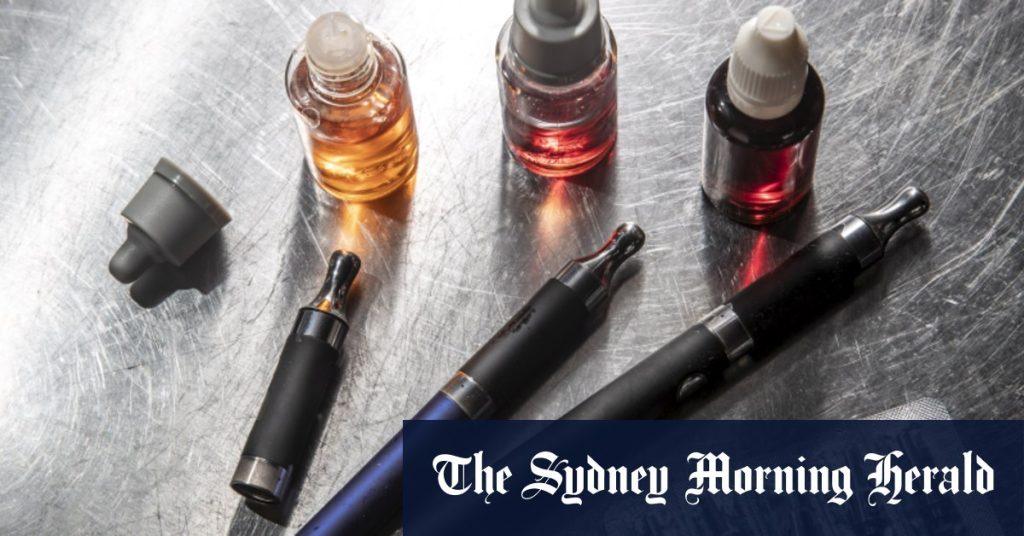The alarming rise of vaping among children and adolescents has prompted the Victorian government to launch new educational resources aimed at curbing this dangerous trend. These resources, designed to be integrated into the Victorian curriculum, provide teachers with the tools to educate students about the health risks of vaping and the manipulative marketing tactics employed by the vaping industry. Last year, reports emerged of school principals resorting to monitoring toilets during recess and lunch breaks to address the rampant vaping issue. Teenage vape dealers were frequently present on school grounds, and some students experienced nicotine withdrawal during exams, highlighting the severity of the problem. These new resources aim to equip students with the knowledge and critical thinking skills necessary to resist the allure of vaping.
The comprehensive educational packs, though not mandatory, provide flexibility for teachers to incorporate anti-vaping messages into existing lessons, such as physical education, or to conduct dedicated lessons on the dangers of vaping. Minister for Education Ben Carroll and Acting Minister for Health Ingrid Stitt expressed their support for the initiative, emphasizing the importance of early education in combating vaping and empowering young people to make informed decisions. The resources specifically focus on helping students recognize and understand the marketing strategies used by the vaping industry, which often target young people through visually appealing packaging and social media influencers. By deconstructing these tactics, the program aims to cultivate critical thinking among students, enabling them to resist the influence of these marketing efforts.
The educational materials also delve into the adverse health effects of vaping, equipping young people with the knowledge to understand the risks involved. Furthermore, the resources address the issue of peer pressure, providing students with strategies to resist the temptation to experiment with e-cigarettes. The developers of the program, which include Monash University, government health and education authorities, and representatives from the Catholic and private education sectors, drew inspiration from a similar initiative launched last year for year 7 and 8 students. This earlier program proved highly successful, with thousands of teachers across the state downloading and utilizing the resources. The hope is that the new materials for year 5 and 6 students will achieve similar success in preventing vaping among younger age groups.
Alexandra Bell, a health promotion officer at Ballarat Community Health, shed light on the frequent requests from educators seeking assistance in addressing the vaping issue among their students. She emphasized the value of the new resources in providing teachers with the necessary information to integrate vaping education into their existing curriculum. The flexibility of the resources allows teachers to tailor the content to meet the specific needs of their students. Bell underscored the significance of targeting year 5 and 6 students, highlighting the importance of primary prevention in addressing curiosity about vaping before it escalates into experimentation. Many young people try vaping simply because they are unsure what it is, so providing them with accurate information can effectively dispel the mystique and reduce their inclination to experiment.
The alarming reports of schoolchildren grappling with nicotine addiction and the presence of teenage vape dealers in schoolyards paint a stark picture of the vaping epidemic among young people. The Victorian government’s proactive approach in developing comprehensive educational resources signifies a crucial step in tackling this growing public health concern. By equipping students with knowledge, critical thinking skills, and strategies to resist peer pressure, the program aims to empower them to make informed choices and avoid the detrimental consequences of vaping. The positive response to the earlier initiative for year 7 and 8 students suggests that these new resources have the potential to make a significant impact in preventing vaping among younger age groups.
The collaboration between various stakeholders, including educators, health professionals, and government authorities, underscores the collective effort required to address this complex issue. The focus on integrating the resources into the existing curriculum indicates a commitment to making vaping education a sustainable and ongoing component of students’ learning. By addressing the root causes of vaping among children – curiosity, marketing influence, and peer pressure – the program aims to cultivate a generation of young people who are well-informed about the risks associated with vaping and empowered to make healthy choices. While the long-term impact of these resources remains to be seen, the proactive approach taken by the Victorian government represents a significant step in the right direction.

